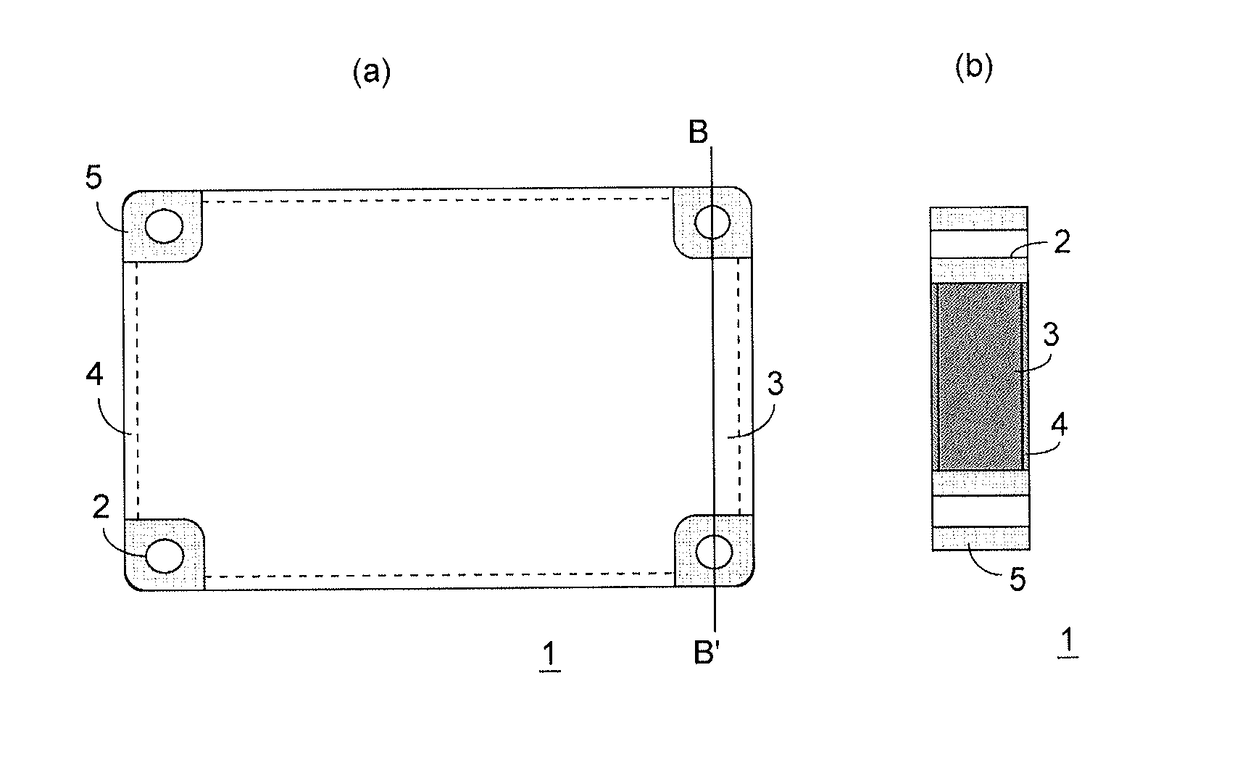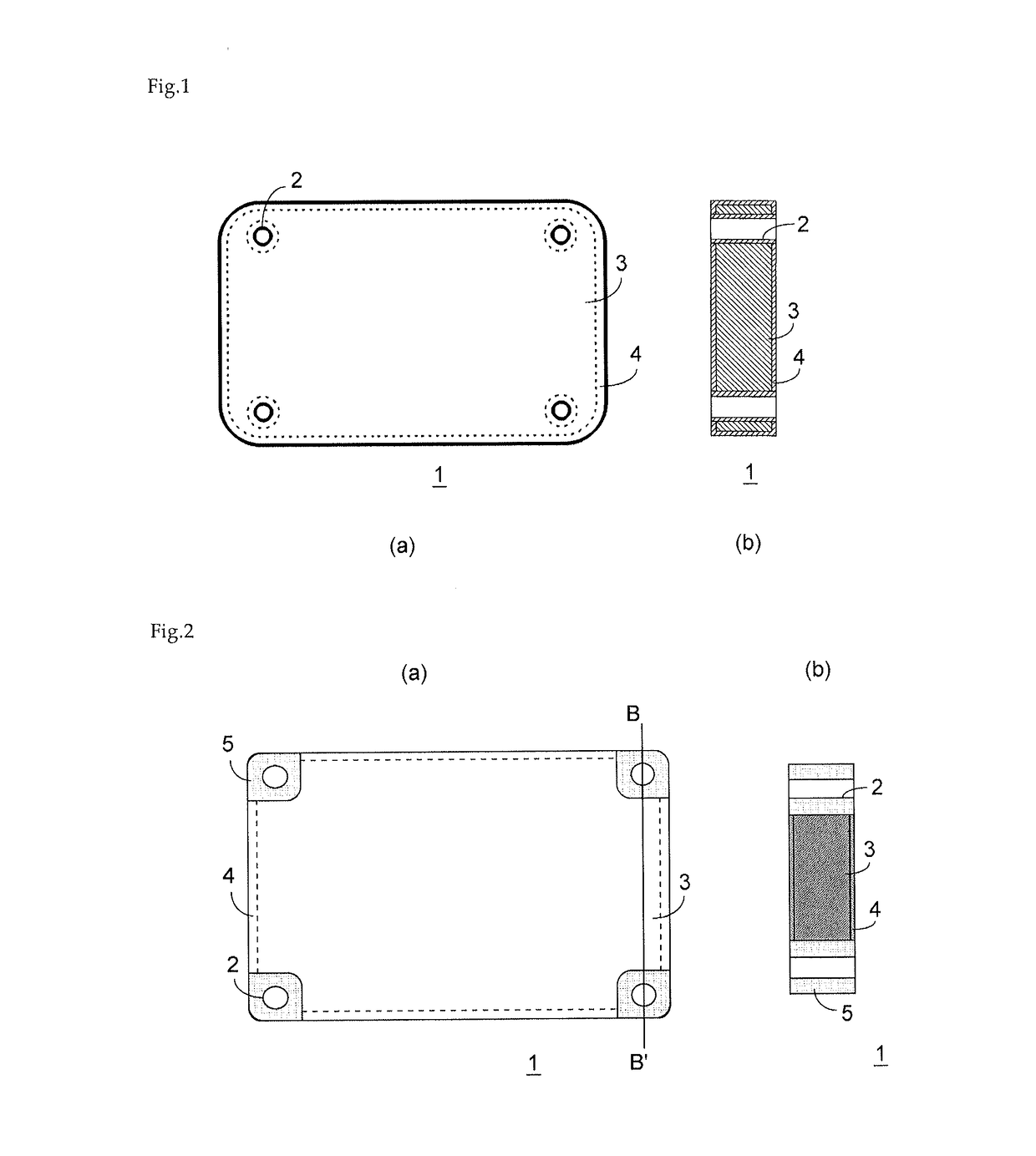Heat-dissipating component and method for manufacturing same
- Summary
- Abstract
- Description
- Claims
- Application Information
AI Technical Summary
Benefits of technology
Problems solved by technology
Method used
Image
Examples
examples
[0060]The present invention will be further explained with the following examples and comparative examples, though the present invention is not limited to these.
examples 1-6
[0061]Silicon carbide powder A (NG-150, average particle size 100 μM: manufactured by Pacific Rundum Co., Ltd.), silicon carbide powder B (GC-1000 F, average particle size 10 μm: manufactured by Yakushima Denko Co., Ltd.), and a silica sol (Snowtex: manufactured by Nissan Chemical Industries Co., Ltd.,) were blended in a composition at a mass ratio of 60:40:10 and mixed for one hour with a stirring mixer.
[0062]This mixed powder was molded, at a pressure of 10 MPa, into a shape of 120 mm×70 mm×7 mm having notches at the four corners. The four corners of the edges of this molded body had notches of 15 mm×15 mm. This molded body was dried for two hours at 120 degrees Celsius, and was heated for two hours at 960 degrees Celsius in air, leading to the manufacturing of a silicon carbide porous body.
[0063]Further, the obtained silicon carbide porous body was processed to a shape of 20 mmφ×7 mm, and the relative density as calculated from its dimensions and mass was 65%.
[0064]Next, the obta...
examples 7-12
[0075]These examples were the same as example 1 with respect to the basic manufacturing method, except that the aluminum alloys comprised 0.1, 1, 5, 8, 16, and 18 mass % of silicon and 1.5, 1.2, and 0.1 mass % of magnesium, respectively, and the relative densities of the silicon carbide porous bodies were respectively 55, 65, and 75%. As the molded body, a molded body such as that illustrated in FIG. 3 was mold compressed to have U-shaped notch portions at the four corners and the long-side portions of the rectangular-shaped body, and in these portions, through holes having a diameter of 7.5 mm were formed. The size of the molded body was 130 mm×80 mm×5 mm, and the center position of the through holes was a position 7 mm inward from the outer peripheral surface. The U-shaped notch portions had a depth of 12 mm and a width of 10 mm. The distance between the centers of adjacent through holes on the same long side was 45 mm. For these heat-dissipating components, the same evaluation as...
PUM
| Property | Measurement | Unit |
|---|---|---|
| Fraction | aaaaa | aaaaa |
| Fraction | aaaaa | aaaaa |
| Percent by mass | aaaaa | aaaaa |
Abstract
Description
Claims
Application Information
 Login to view more
Login to view more - R&D Engineer
- R&D Manager
- IP Professional
- Industry Leading Data Capabilities
- Powerful AI technology
- Patent DNA Extraction
Browse by: Latest US Patents, China's latest patents, Technical Efficacy Thesaurus, Application Domain, Technology Topic.
© 2024 PatSnap. All rights reserved.Legal|Privacy policy|Modern Slavery Act Transparency Statement|Sitemap



